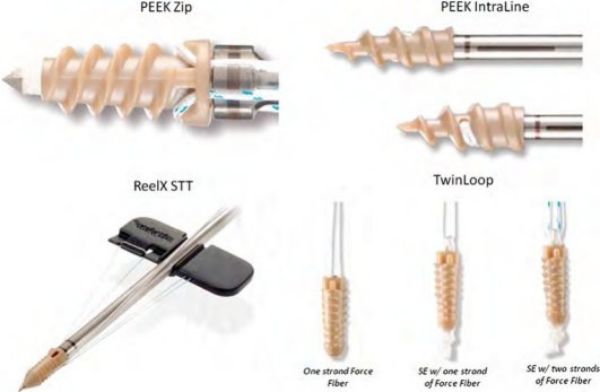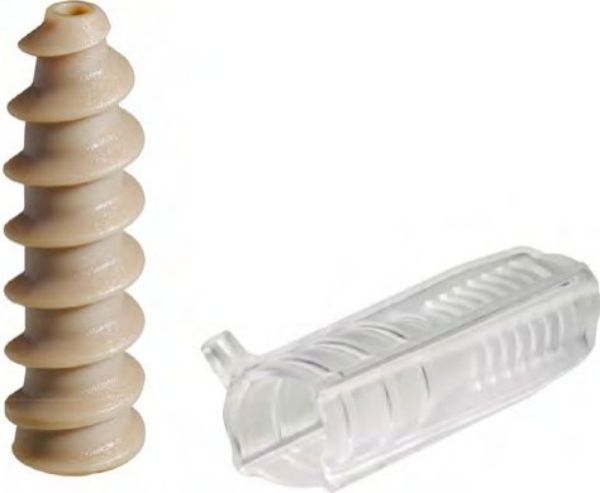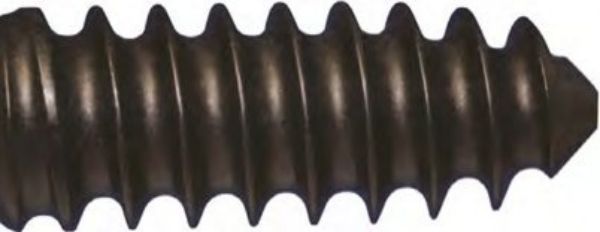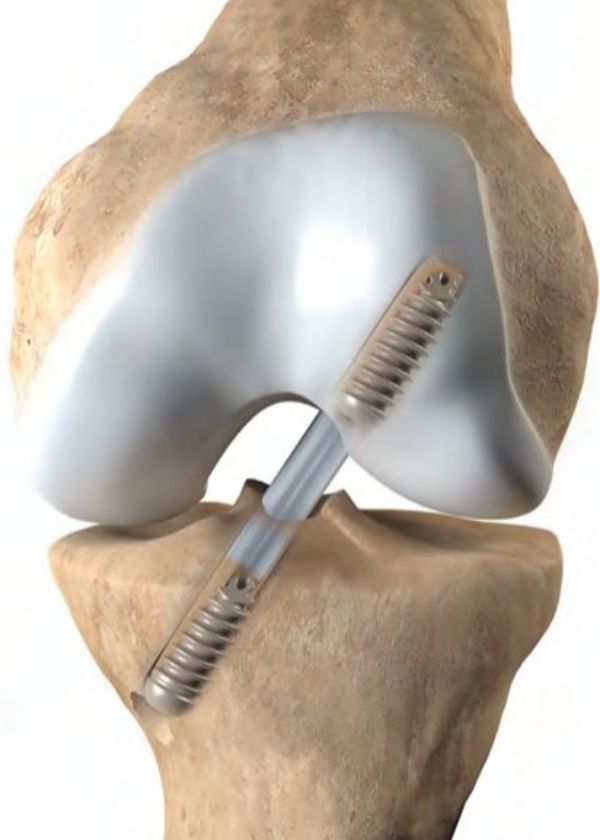
Privacy statement: Your privacy is very important to Us. Our company promises not to disclose your personal information to any external company with out your explicit permission.
Arthroscopy is a minimally invasive surgical technique that has revolutionized the repair of tendons, ligaments, and other soft tissues. Arthroscopy minimizes access ports and uses an endoscope or a small camera and a set of small instruments to deliver treatment within the joint. These instruments are administered through a set of small incisions of approximately 1 cm.
Prior to the use of this technique, all soft tissue repairs were performed via open or mini-open exposure. Advantages of the arthroscopic technique include significant reduction in pain and surgical site problems that often persist long after the repaired ligaments and tendons have healed.
Although most arthroscopic surgeries are performed to repair torn or damaged menisci and anterior cruciate ligaments in the knee, suture anchor devices for use in the shoulder have seen the most dynamic development in terms of biomaterials.

Suture anchors anchor ligaments, tendons, and joint capsules to bone, helping to convert open surgery to arthroscopic techniques. Anchors are embedded in the bone and hold the soft tissue to the bone with sutures passed through small holes in the bone.
Some of the most common surgeries using suture anchors are rotator cuff repair, Bankart repair (the torn labrum and ligaments are reattached and tightened to the shoulder), labral anterior-posterior (SLAP) repair, and hip labral repair. Considering only shoulder applications, anchors are considered the greatest innovation in shoulder surgery.
The first generation of shoulder arthroscopic devices used stainless steel and titanium anchors, both of which failed primarily due to suture breakage through small holes in the metal. Complications such as loosening, displacement, cartilage damage, difficulty in revision surgery, and interference with magnetic resonance imaging may occur.
To eliminate the risk of implant migration and reduce incidental cartilage damage, there has been a shift toward the use of bioabsorbable anchors. Bioabsorbable anchors are designed to secure the tendon to the bone and are then slowly eliminated through the body's natural pathways through metabolic digestion.
At least 40 bioabsorbable polymers for surgery have been developed, such as polyglycolic acid (PGA), polylactic acid (PLA), etc. Although largely successful, failures have been reported with the clinical use of bioabsorbable anchors due to rapid degradation, osteolysis and arthropathy, synovitis, implant fragmentation, and cartilage damage.
The focus of anchor design is to find a suitable material that allows the anchor to be used until the tissue heals. PEEK has been used in suture anchors for more than a decade, and its use can minimize some of the disadvantages of metal and bioabsorbable anchors.
PEEK is strong yet flexible, so it can provide comparable grip to metal anchors, but it carries less risk of third-body wear causing arthrosis or joint destruction after extraosseous dislocation. Another benefit of its softness is that it can be drilled through if revision surgery is required.
PEEK is also radiolucent, eliminating artifacts in CT or MRI imaging, and has clear advantages over other polymers in terms of holding capacity and strength. PEEK has less risk of pinhole breakage than bioabsorbable polymers and eliminates concerns about premature degradation and pullout.

Utilizing similar functionality to suture anchors, PEEK has been used as an interference screw for tenodesis and repair of torn anterior cruciate ligaments (ACL) and posterior cruciate ligament (PCL), and as a fixator for meniscal tears. Incorporated into some product lines.
Interference screws are fully threaded screw-type devices used to graft autologous or allogeneic soft tissue to host bone. For interference screws, the same technology drivers exist: Metal screws can complicate revision surgery and disrupt MRI scans, and bioresorbables are subject to inflammation and strength limitations.
Drawing on the similar advantages achieved by PEEK bone suture anchors, a variety of PEEK interference screws are currently available.


In recent years, clinical research on PEEK anchors has gradually increased. The following are the specific situations in several aspects:
Rotator cuff injury: Rotator cuff injury is one of the main areas of clinical application of PEEK anchors. Studies have shown that PEEK anchors have better stability and biocompatibility than metal anchors, and will not cause adverse reactions to the joints and damage to the tissues around the rotator cuff. A randomized controlled trial of 48 patients with rotator cuff injuries showed that the healing rates of the PEEK anchor group and the metal anchor group were similar, but the PEEK anchor group had less pain and faster recovery of shoulder joint function.
Hip reduction surgery: PEEK anchors can also be used for hip reduction surgery. A prospective study of 52 patients undergoing hip reduction surgery showed that the application of PEEK anchors during surgery was safe and reliable, and the post-operative fracture healing rate was higher than that of the metal anchor group.
Pediatric surgery: PEEK anchors can also be used in pediatric surgery. Studies have shown that PEEK anchors not only maintain the same fixation capabilities as metal anchors, but also reduce pain and discomfort after surgery in children.
Minimally invasive arthroscopic technology has revolutionized soft tissue repair, and the number of arthroscopic surgeries has increased significantly in recent years. Suture anchor design has evolved rapidly, with new designs such as knotless and vented anchors providing many functional benefits for fixation and healing.
PEEK for arthroscopic anchoring offers many potential benefits compared to metal anchors and bioabsorbable anchors, including a combination of high grip strength, softness, manufacturability, and radiolucency.
Taking advantage of these advantages, PEEK is also used to interfere with screws to fix soft tissue. Although PEEK anchors have good biocompatibility and stability, care must be taken to avoid problems such as material fatigue and fracture during practical application.
In addition, the long-term effect of PEEK anchors requires more long-term follow-up and large-sample clinical studies to further evaluate.

LET'S GET IN TOUCH

Privacy statement: Your privacy is very important to Us. Our company promises not to disclose your personal information to any external company with out your explicit permission.

Fill in more information so that we can get in touch with you faster
Privacy statement: Your privacy is very important to Us. Our company promises not to disclose your personal information to any external company with out your explicit permission.